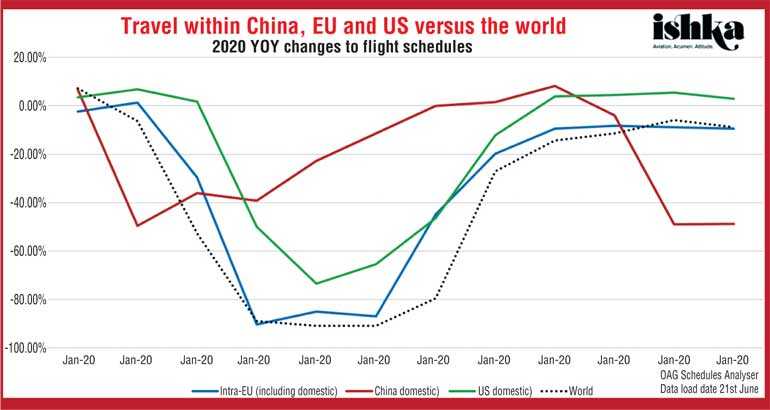Sunday Apr 20, 2025
Sunday Apr 20, 2025
Monday, 29 June 2020 00:00 - - {{hitsCtrl.values.hits}}


More than three months into the pandemic, the future of air travel remains uncertain
Alan Joyce, CEO of Qantas Group one of the best performing airlines in the world, certainly seems to think so. Qantas has stated that the airline will make major changes as part of a ‘post-COVID’ recovery plan. This will include over 100 aircraft being grounded for up to 12 months; the Group’s workforce reduced by 6,000 (pre-COVID total was above 30,000); and the ‘stand down’ of 15,000 employees, mostly those associated with international operations. 
The Australian government supports companies and employees affected by the pandemic. Some domestic flying is subsidised by the federal government, and employees who have been ‘stood down’ are paid a minimum wage by the state. This is a fraction of what their pre-COVID salaries were, of course, especially in the case of pilots and other professionals; but it is enough to ensure they do not need to dip into their savings.
Domestic flying shows some promise
Australia, with its vast landmass and widely dispersed population centres, is confident that domestic travel will remain robust. This is despite the fact that infections continue to rise in its two main cities, Melbourne and Sydney, caused mainly by arriving passengers from overseas, who were already infected.
The USA, the world’s biggest airline market, is still struggling with the virus. However, domestic travel has resumed and forward bookings appear to be recovering. (See given table). But if the pandemic continues to rage unchecked, this may not be sustainable.
In China, domestic scheduled flights have recovered to above 2019 levels but show a puzzling drop after the August peak. Whether this is just a scheduling anomaly remains to be seen.
This column forecast in April that domestic travel remains the best hope, and that seems to be coming true. The intra-Europe market shows the only ‘green shoots’ in the international sphere, but this does not reflect a true snapshot and is best regarded as quasi-domestic. With India and Pakistan still in the throes of COVID-19, domestic travel in the sub-continent is unlikely to recover anytime soon.
Qantas grounds its entire international fleet
Qantas has stated that it does not see international travel resuming for the foreseeable future. A ‘travel bubble’ between Australia, New Zealand and possibly Fiji will constitute the extent of the only non-domestic flights that are likely to resume anytime soon.
Qantas’s Airbus A380 fleet and crew remain grounded, and a write-down on the value of its A380s, spare engines and spare parts, estimated at A$ 1.25-1.4 billion is to be made. The last six Boeing 747 aircraft will be scrapped, and future deliveries of Boeing 787s and Airbus A321s will be postponed.
The only optimists
The only airline to maintain a large international schedule throughout the last few months has been Qatar Airways. This has led to the airline having over 17% of worldwide traffic and being the largest international carrier for the first time in its short history. Because Qatar has no domestic flying at all, the airline has obviously decided to keep flying, though the profitability of this operation is currently undisclosed.
Emirates Airline, another Gulf ‘giant’, has stated that scheduled flights will resume in July, with the airline’s flagship A380 flying the London route. This will be the only scheduled A380 flight in the world. Most airlines have grounded their entire fleets of the gigantic ‘super jumbo’, with Air France announcing that it will cease operations of the type permanently.
An uncertain future
More than three months into the pandemic, the future of air travel remains uncertain. It is very likely that the (northern) summer international tourist season will be a non-event. Whether recovery will be possible for the Christmas peak will largely depend on the progress on the pandemic in coming months.
(Comments may be sent direct to [email protected]. This and other writings are available on the author’s blog https://surenratwatte.com/blog/. You can follow him on Twitter @SurenRatwatte and on https://medium.com/@suren.ratwatte.)